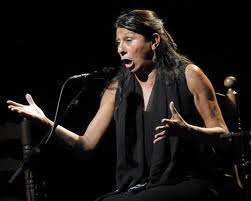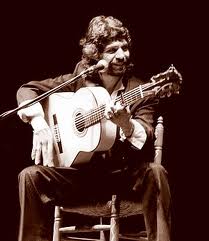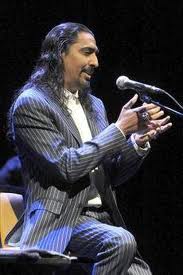Flamenco
Flamenco is the most famous style of dance and music in Spain. If you ever travel to Seville, not only you'll see it's extremely passionate, but it is also a lot of fun and a great way to learn a Spanish dance.

Flamenco History
Flamenco originated in the Spanish region of Andalusia in the 18th Century and is closely linked to the gitano (gypsy) culture present in that region. The art form of Flamenco consists of three distinct parts: the 'cante' or song, the 'toque' or playing of the guitar, and the 'baile' or dance.
The real expansion period for Flamenco in Spain was the period which has now been dubbed the Golden Age of Flamenco. This period, from 1869 to 1910, saw the appearance of cafes cantantes.
The cafes cantantes were small venues that organised small, ticketed performances of Flamenco. Thanks to the cafés cantantes, Flamenco became a public attraction and increased in popularity amongst the general public.
The cafés cantantes were successful as they made Flamenco into an organised, structured performance with specific times, artists and songs. Although this was a more commercialised form of the traditional organic, spontaneous Flamenco meetings, it made Flamenco more accessible to the general public and visitors to Spain.

To the annoyance of Flamenco purists, this meant that Flamenco was becoming more of a tourist attraction than an expressive art form. It was also during this time that Flamenco guitarists became famous in their own right and so Flamenco guitar was transformed into its very own art form. One of the most famous Flamenco Golden Age singers was Silverio Franconetti, who was one of the first Flamenco singers who could sing all the 'palos' (styles of Flamenco music) equally well.
From 1922, Flamenco entered what is called the 'Theatrical Period' of Flamenco. Flamenco became even more commercialised, with the small, intimate cafes cantantes being replaced by much larger, theatre-like venues.
The most famous artist of this time was Pepe Marchena. Pepe Marchena was a Flamenco singer from Seville who sang in a sweet, falsetto voice. He was very influential in Flamenco as he was one of the first singers to sing standing up, and not sitting in a chair as had been the norm. Pepe Marchena also liked to wear a bizarre outfit, such as riding clothes.
Today, Flamenco has changed somewhat. People who want to become a Flamenco dancer, guitarist or singer are professionally trained. Traditionally, Flamenco artists would learn simply by experiencing other performers.
There are now three distinct ways to see a Flamenco performance. The first is the most organic and dynamic, but also the most difficult to find. It's called a 'Juerga' and is simply a spontaneous exhibition of Flamenco, like a jam-session between musicians.
The two other forms are more commercial. You could go and see a professional Flamenco concert which is much more formal and normally includes several singers, guitarists and dancers, unlike a Juerga which would only have one set.
Flamenco can also been seen in a theatre, although these performances tend to show the Flamenco technique in a setting similar to that of a Ballet performance, an exhibition of skill rather than a conveyance of feeling.

The Flamenco Dance is an expression of emotion with great use of the arms and rhythmical stamping of the Flamenco dancer's feet. However there are many different variations of the dance.
'Flamenco puro' or Pure Flamenco dancing is the form that is closest to its roots in Andalusian gypsy culture. It is always improvised by the dancer. This is the form of Flamenco in which you are most likely to find Flamenco dancers in extravagant, frilly dresses.
Classical Flamenco dancing is the type of Flamenco that most professional Flamenco dance troupes use. It is very Ballet like, with little movement in the dancer's hips, unlike in Flamenco puro.
The highly technical form of Flamenco is called Modern Flamenco. A Modern Flamenco dancer has to study the Spanish dance for many years, both with and without props like fans and castanets. The focus of Modern Flamenco dancing is on fast yet accurate footwork.
Finally, there is 'Nuevo Flamenco' or New Flamenco which is a very modern, jazzy version of the Spanish dance. New Flamenco tends to be choreographed and the dancers often wear much plainer costumes than those of the Flamenco Puro dance style.
Flamenco has been considered to be so important that it has been deemed a UNESCO Item of Intangible Cultural Heritage of Humanity.
